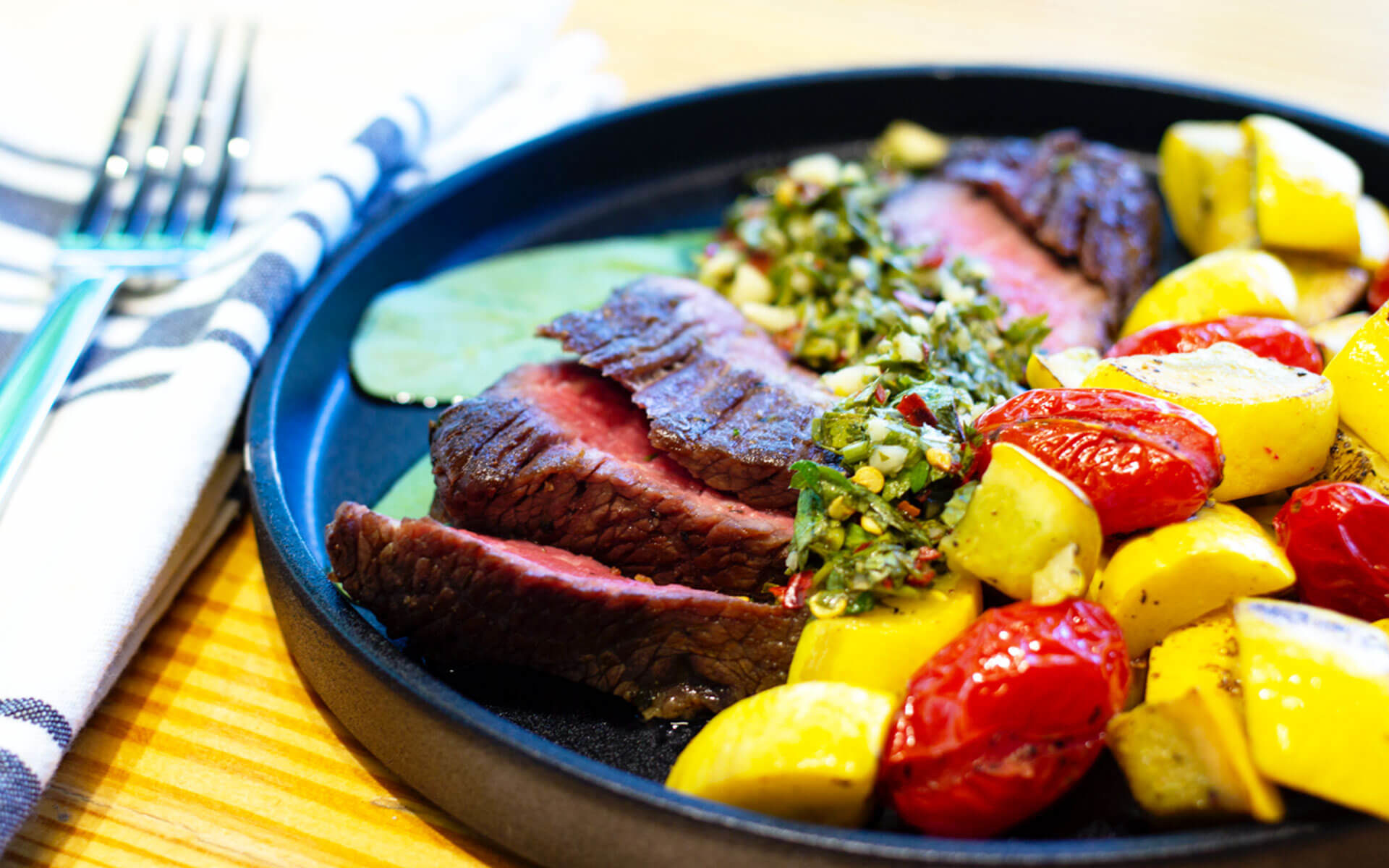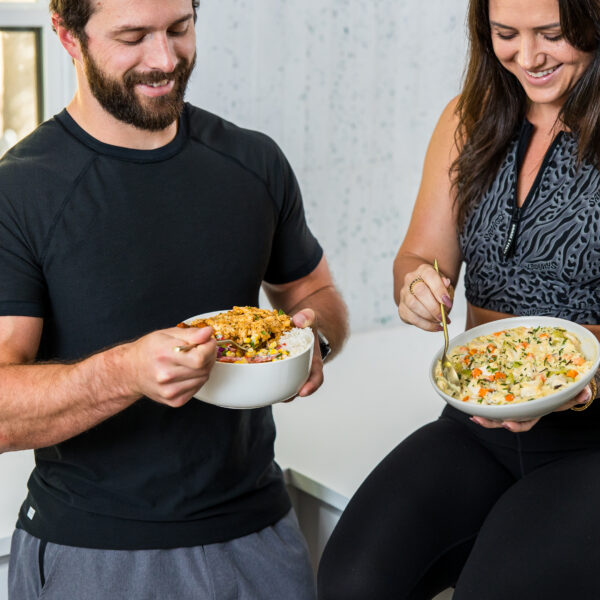Did you hear? Our meals will be moving to one-size containers. This doesn’t mean that all meals will be the same amount of calories, fat, carbohydrates or protein, but simply that there will now be one size of meals offered rather than three. Some of our meals have already transitioned to one size and the rest will be transitioning soon.
Why shift to one-size?
We know that nutrition is not a one-size-fits-all scenario. Given that, switching to one-size containers may seem counter-intuitive. However, by consolidating our offerings, we’re working to give you more options, allowing you to figure out what works best for you.
There are a few reasons for this shift to one-size. First, we are using the one-size consolidation as a way to increase the number of menu items we offer. By discontinuing sizes that aren’t in demand, we can make more room on the menu for exciting new items. We’re often asked to provide more variety, and this is one way that we’ll be able to do just that. Going forward, you’ll more regularly see new meal offerings and even new meal plans.
It’s also important to remember that one-size doesn’t mean one calorie or macro amount. The meals are still varying caloric ranges and contain different macros, depending on the dish. You will still be able to find something that works for you, even with the one-size consolidation. We’ve been conscious of keeping meals with a variety of calorie counts and have been mindful of the 1200-calorie meal plan when making the transition to one-size containers. If you currently use that plan, you’ll still find options that fit.
Interested in hearing more about mindful eating? See the section below. While the focus is Whole30, the same principles apply, even if you’re not doing one.
A word on Whole30, mindful eating, and the one-size shift
In case you need a refresher, here’s a little background on Whole30. The Whole30 is a 30 day reset designed to improve your health, your habits and your relationship with food. For 30 days, you remove commonly inflammatory foods like added sugars, gluten, grains, dairy, alcohol, and legumes. After 30 days, you reintroduce foods one at a time to see how they impact you.
A big reason for the shift to one-size for the Whole30 meal plan is to further move away from the idea of counting calories while on Whole30 and more closely align with the Whole30 rules. This change will make selecting your Whole30 meals even easier; if the meal has the Whole30 Approved logo, you’re good to go. No need to spend time deciding what size to buy. We’ve borrowed from the Whole30 meal template to make sure that all of our Whole30 meals are balanced and satisfying, so you can focus less on counting calories and more on eating mindfully. This includes trusting your feelings of hunger and learning to stop eating when you get full. When you’re able to do this, you’ll find that you don’t need to count calories or track your food, even if you’re trying to lose weight.
Mindful Eating
By practicing mindful eating during your Whole30, you’ll be setting yourself up for success during the reintroduction phase and in finding your own food freedom. What is mindful eating? Mindful eating simply means giving full attention to your food at mealtimes. It also means getting more in touch with your hunger/fullness cues and how your body feels when you eat certain foods. The good news? Whole30 is a great way to reset your hormones and hunger signals so that you’re more easily able to eat mindfully.
Curious about where to begin? Here’s a helpful exercise at mealtimes, whether you’re in the midst of a Whole30 or just trying to find more balance when it comes to eating. When you sit down to eat, do so without any distractions; no phone, no TV, no tablet, no book. Often, we use meal times as an excuse to distract ourselves from whatever else might be happening in our lives. When we do this, we have a harder time recognizing when we’re full or satisfied and as a result, may end up overeating or feel unsatisfied.
Here’s a final word on mindful eating and Snap Kitchen meals from the Whole30 headmistress herself, Melissa Hartwig:
“As I wrote in The Whole30: One goal of our program is to get you back in touch with your body’s natural regulatory mechanisms, trusting your feelings of hunger, and intuitively knowing when to stop eating. That means after just a few weeks of Whole30 meals, you’ll be far more confident listening to the signals your body is sending you, fueling your body with just the right amount of food for great energy, restful sleep, reduced cravings, and excellent performance in the gym or your sport. We’ve specifically designed the amounts and proportions in these Snap Kitchen meals to follow the proven Whole30 meal template, so you won’t need to count calories or plug your food into a calculator— not even if you’re trying to lose weight. Trust the template to guide you in the right direction, and rejoice that weighing, measuring, or tracking calories are no longer a part of your health journey!”
Looking to cut out inflammatory foods and give Whole30 a try? Check out Snap Kitchen and sign up today!





Leave a Reply
1 Comment
What a pluesare to find someone who thinks through the issues